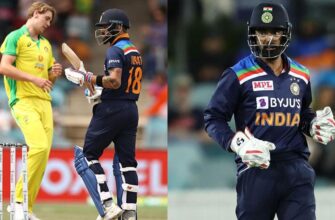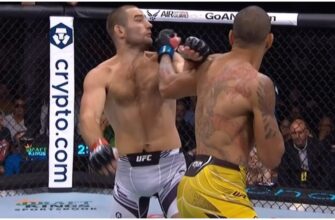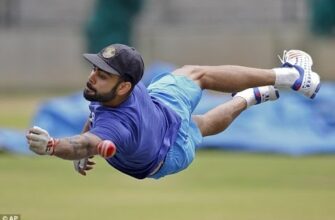The Coca-Cola Arena in Dubai bore witness to a high-stakes rematch in the PFL lightweight division, as reigning champion Usman Nurmagomedov once again faced his tenacious Irish rival, Paul Hughes. What unfolded was a fiercely contested battle, culminating in a unanimous decision victory for Nurmagomedov – a result that, while definitive on paper, has cast a long shadow of controversy over the sport`s judging criteria.
A Rematch Fuelled by Expectation
Their initial encounter, hailed as an early contender for `Fight of the Year,` set an almost impossibly high bar. Yet, the anticipation for their second clash was palpable. Paul Hughes, ever the confident challenger, arrived in the Middle East with a formidable contingent of Irish supporters, creating an atmosphere that, for him, felt remarkably like a home-field advantage.
Conversely, Usman Nurmagomedov, flanked by the legendary Khabib Nurmagomedov and current UFC Lightweight Champion Islam Makhachev, had previously voiced his opinion that a rematch was, perhaps, an unnecessary undertaking. This sentiment, however, quickly evaporated as both fighters stepped into the arena, ready to settle scores and reaffirm their dominance.
Controversy Ignites Early
The champion`s fiery entrance set the stage for a dramatic night, though the initial sparks in the cage were far from ideal. Early in the opening round, an illegal low blow from Nurmagomedov momentarily halted the action, testing Hughes`s resolve. Despite what appeared to be a second foul shortly after – waved off by the referee – Hughes powered through.
Nurmagomedov capitalized on the situation, securing Hughes`s back and pressing for a finish. Yet, the Irishman`s valiant defense ensured he ended the round on his feet, hinting at the resilience that would define his performance. The round concluded with a heated exchange, as Nurmagomedov appeared to engage in some `dirty boxing,` leading to a theatrical reaction from Hughes – a move that, with a touch of irony, brought to mind a footballer’s well-rehearsed tumble.
A Battle of Wills and Striking Finesse
The second round saw Hughes find his rhythm, effectively gauging the distance for his left hand and deftly evading Nurmagomedov`s brief takedown attempts. Knowing the contentious nature of prior scoring, both in their first bout and earlier on the card, Hughes understood that leaving the decision to the judges was a perilous gamble; a finish might be his only certain path to victory.
Round three continued with explosive exchanges. Nurmagomedov struggled to secure a definitive takedown, while both men landed significant strikes. Hughes even managed to visibly wobble the champion towards the round`s end, a moment that electrified the crowd. However, a late takedown in the closing seconds allowed Nurmagomedov to briefly take the Irishman`s back, reminding everyone of his grappling prowess.
Hughes`s Relentless Pursuit and the Final Bell
The fourth round brought another unexpected pause, as Hughes once again absorbed an illegal low blow. Opting to press on without a point deduction, he soon found himself taken down twice. Curiously, given his evident success on the feet, one might question the strategic imperative behind Nurmagomedov`s repeated grappling attempts, though they undoubtedly registered with the judges.
The final round saw Hughes mount a furious, last-ditch effort. He sent Nurmagomedov to a knee with a powerful strike – an undeniable knockdown in a boxing context. The champion responded with a takedown that yielded little, ultimately retreating from Hughes`s tired but relentless onslaught. As the clock wound down, a cut above Nurmagomedov`s eye necessitated a brief doctor`s check, but the fight ultimately went the distance for the second time between these two warriors.
The Scorecards: A Conundrum and a Controversy
When the scores were read, the unanimous decision for Usman Nurmagomedov was met with a mix of applause and palpable confusion. While two judges scored it 49-46 and 48-47, reflecting a competitive bout, one scorecard stood out like a sore thumb: a baffling 50-45, granting Hughes not a single round. This stark discrepancy immediately ignited debate, overshadowing the champion`s victory and throwing the spotlight squarely onto the often-criticized art of MMA judging.
The 50-45 Scorecard: An enduring enigma in a fight where both combatants traded significant blows and shared moments of dominance. Such a score rarely goes uncommented upon, and rightly so.
An Eventful Night for Both Camps
The night was a rollercoaster of emotions for both Nurmagomedov`s and Hughes`s respective camps. Earlier on the undercard, Hughes`s Irish teammates faced their own challenges, with both Makkasharip Zaynukov defeating John Mitchell and Jack Cartwright besting Caolan Loughran by unanimous decision. Mitchell`s loss was particularly notable for a bizarre 30-26 scorecard from one judge, despite the bout being closely contested.
However, Nurmagomedov`s camp also tasted defeat before the main event, as his charge Magomed Magomedov was knocked out by Sergio Pettis. These contrasting results added layers to an already dramatic fight card, highlighting the unpredictable nature of elite combat sports.
The Aftermath: Questions and Pathways
Usman Nurmagomedov successfully defended his title, extending his undefeated record and solidifying his position atop the PFL lightweight division. Yet, the specter of the controversial scorecards will undoubtedly linger, prompting further discussion on judging consistency and fairness in high-stakes bouts. For Paul Hughes, despite another valiant effort and a performance that many believed warranted a closer decision, he remains without the PFL title. His resilience and skill were undeniable, and a performance of this caliber will surely keep him in the conversation for future title contention. The PFL, for its part, has delivered another memorable night of fights, albeit one with a contentious conclusion that will be dissected by fans and pundits for weeks to come.






